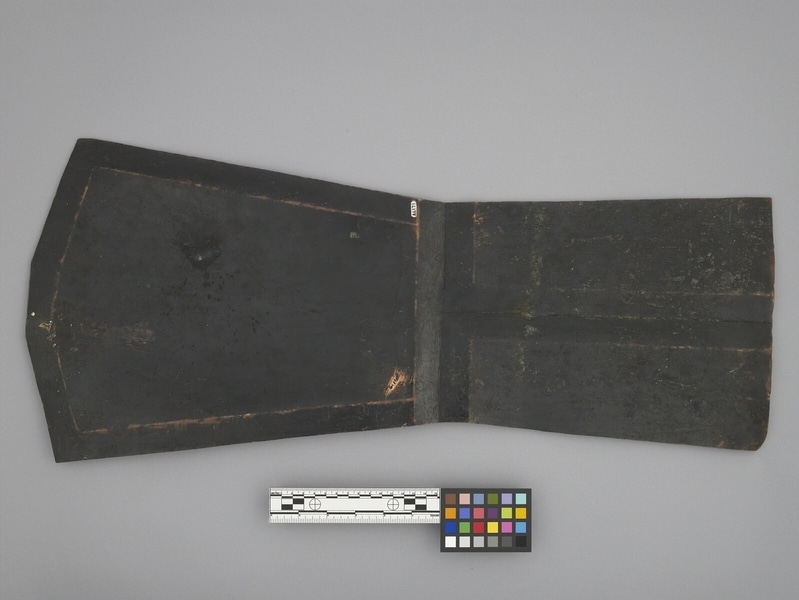Copper Item Number: A6171 from the MOA: University of British Columbia


Description
Copper with edges that flare slightly toward the base as well as the top. Has a T-shaped raised design element near the centre, that divides the bottom section in half and separates the top section from the bottom. The top section is slightly convex. The copper is blackened overall with incised diagonal lines on the bottom section and an incised bear face and two paws surrounded by a border on the top section.
History Of Use
Coppers can be named, displayed, and transferred in accordance with ceremonial privilege and protocol. Historically, within potlatch economies, coppers would rise in value each time they were purchased, ceremonially presented, and strategically re-sold or given away. Among the Kwakwaka’wakw, coppers were sometimes cut or broken during rivalries. Some of these were riveted together and used again, their value then having to be re-established.
Cultural Context
status; wealth; ceremonial; potlatch
Narrative
The copper was purchased by Arthur Bill (or Bell?) 70 years ago at a potlatch in Smith Inlet, from Mrs. G. Williams' grandfather, Qua Qua Botla Samia, chief of the Smith Inlet tribe. When Arthur died he gave the copper to Mrs. Williams.
Specific Techniques
During XRF analysis this 'copper' was found to be covered, or made of an amalgam of silver and mercury.
Item History
- Made in British Columbia, Canada before 1880
- Collected in Hopetown, British Columbia, Canada and Hegam's, British Columbia, Canada
- Owned by George Williams before August 15, 1953
- Received from H. R. MacMillan (Funding source) and George Williams (Seller) on August 15, 1953
What
- Name
- Copper
- Identification Number
- A6171
- Type of Item
- copper
- Material
- copper metal and silver alloy metal
- Manufacturing Technique
- hammered, painted and incised
- Overall
- height 69.0 cm, width 30.2 cm, depth 2.0 cm
Who
- Culture
- Kwakwaka'wakw
- Previous Owner
- George Williams
- Received from
- H. R. MacMillan (Funding source) and George Williams (Seller)
Where
- Holding Institution
- MOA: University of British Columbia
- Made in
- British Columbia, Canada
- Collected in
- Hopetown, British Columbia, Canada and Hegam's, British Columbia, Canada
When
- Creation Date
- before 1880
- Ownership Date
- before August 15, 1953
- Acquisition Date
- on August 15, 1953
Other
- Item Classes
- metalwork
- Condition
- fair
- Current Location
- Case 27
- Accession Number
- 1921/0001